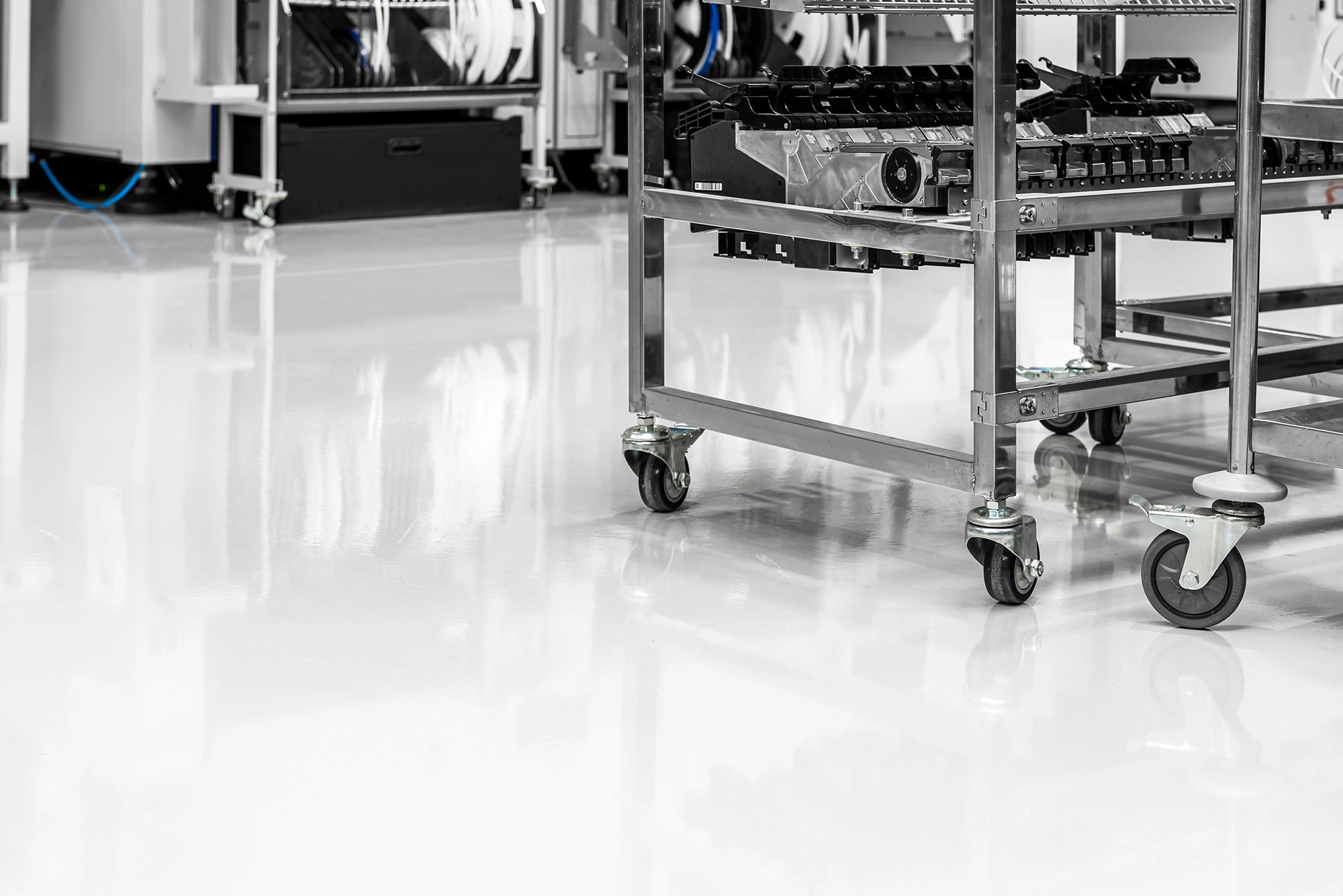AOI (ang. Automated Optical Inspection)
Automatic optical testing of circuits involving the comparison of the actual image of the circuits scanned by the camera with the image generated on the basis of the Gerber project files from which these circuits were produced.
FR-4
The most popular material used for printed circuits. The FR-4 are laminates involving the comparison of a glass fiber fabric bonded with epoxy resin (refractory and self-extinguishing), which are covered with one or both sides of copper foil.
Surface mount (SMT)
Surface Mount Technology – a method of assembling electronic components (SMD) on a printed circuit board (PCB); Surface assembly is usually carried out automatically.
Through-hole assembly (THT)
Through-hole Technology – sposób montowania podzespołów elektronicznych na płytce obwodu drukowanego (PCB). Elementy przewlekane umieszcza się ręcznie lub automatycznie we wcześniej przygotowanych otworach w płytach elektronicznych, a następnie lutuje po przeciwnej stronie.
Mounting of connectors in PRESS-FIT technology
Installation of multi-contact connectors is often used; they are not soldered joints, but pressed with a force of several tons per cm2; these connectors require special tools – presses for assembly and possible repair.
Applying protective coatings
(Conformal Coating) – protective coating applied to the electronic circuits in order to protect them against moisture, dirt, chemicals, temperature; covered elements are resistant to mechanical damage and vibrations; the coating can be applied by various methods:
- varnishing (covering the PCB with varnish):
- Immersed (Deep Coating) – the PCB is immersed in the varnish,
- spray (Spray) – the PCB is coated with varnish in the form of spray
- pouring (resins, silicone and other plastic masses)
- Molding – filling the plate with plastic mass
- Potting – pouring the plate with epoxy resin
RoHS
The EU directive, according to which new electronic equipment placed on the market in the European Union and EFTA starting from July 1, 2006 (in Poland from March 27, 2007) requires contains restrictions on the content of harmful materials: lead, mercury, cadmium, hexavalent chromium, polybrominated biphenyls (PBB) and polybrominated phenyl ethers (PBDE).



